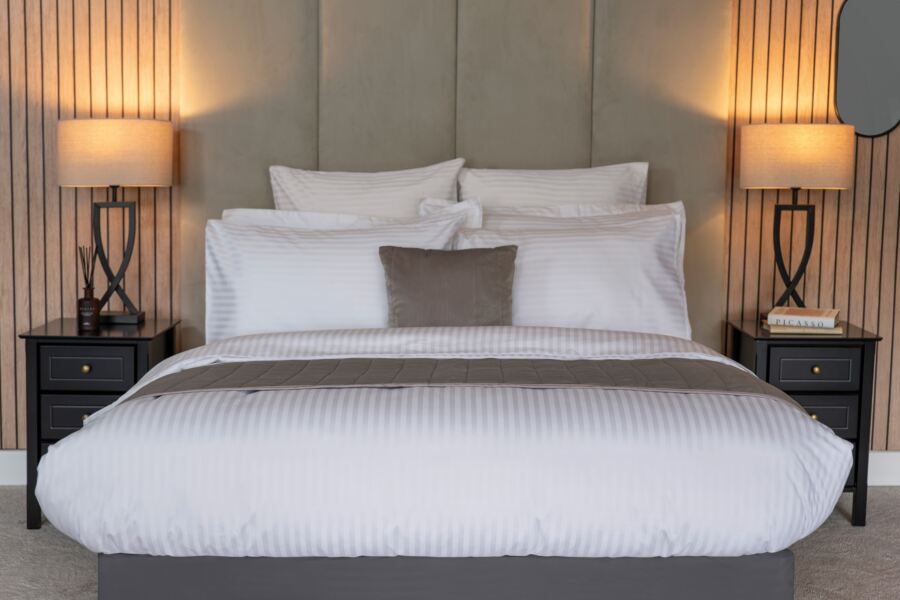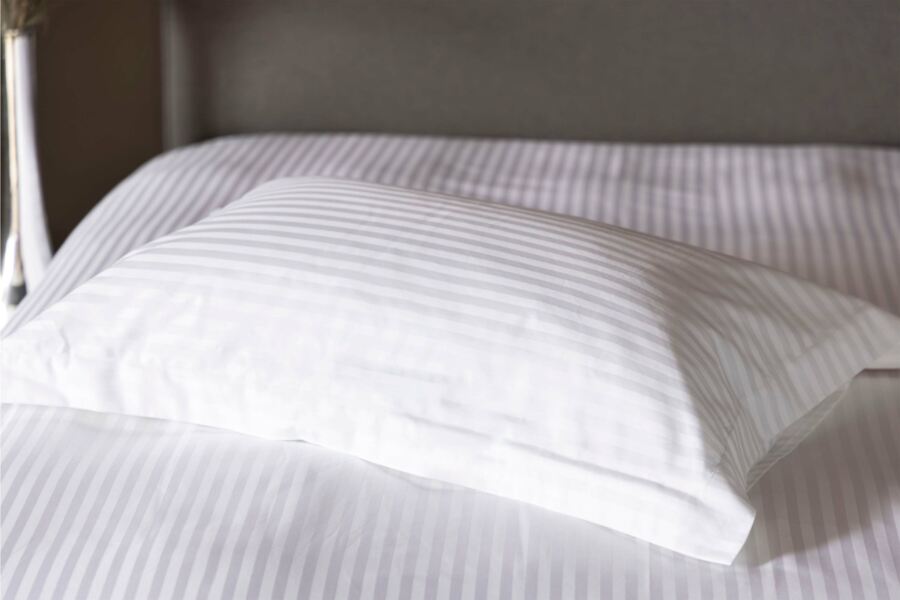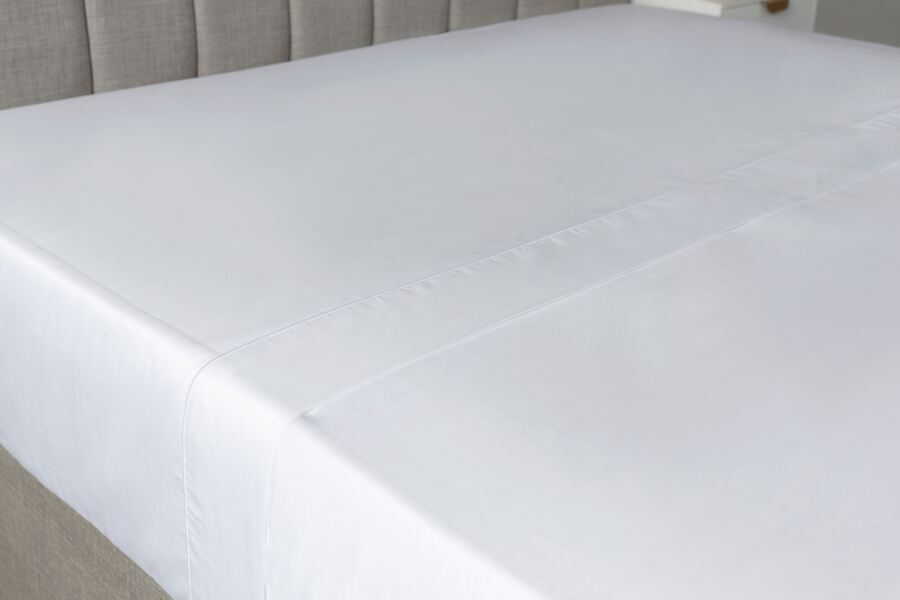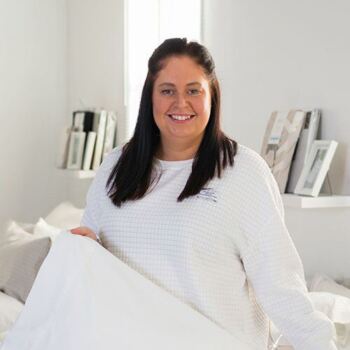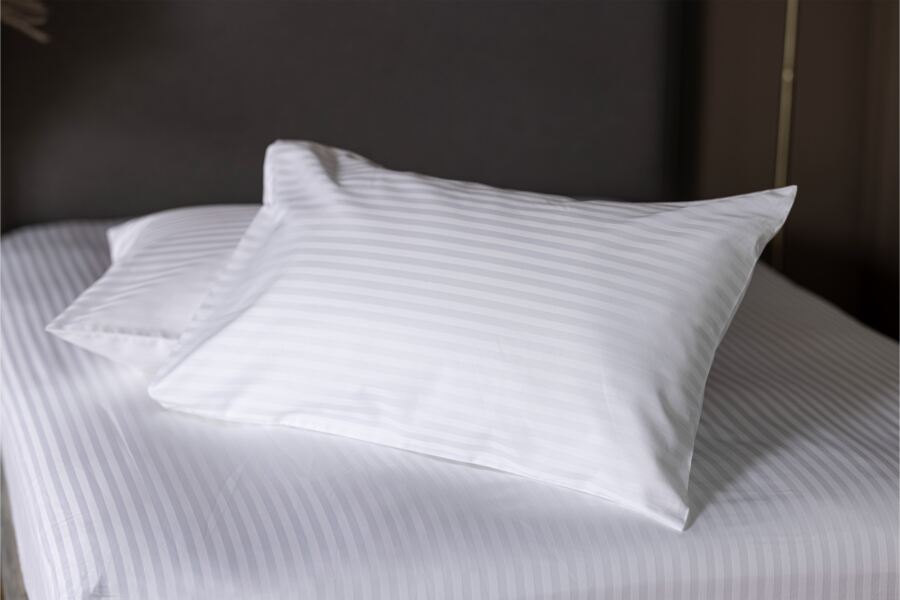Table of Contents
- How To Iron Your Sheets Quick & Easy At Home
- Step-By-Step Guide: How To Iron Sheets
- How To Fold & Store Ironed Sheets
- FAQs
How To Iron Your Sheets Quick & Easy At Home
Ironing bed sheets can be a time-consuming chore, but it doesn't have to be. All you need is an ironing board, a hot iron and a bit of moisture to achieve crisp, luxurious-looking, soft sheets at home.
Luckily, everything you need to know about ironing sheets the quick and easy way is in this guide. We'll explain how to prepare your sheets, what temperature to set the iron to and folding techniques to keep your sheets wrinkle-free.
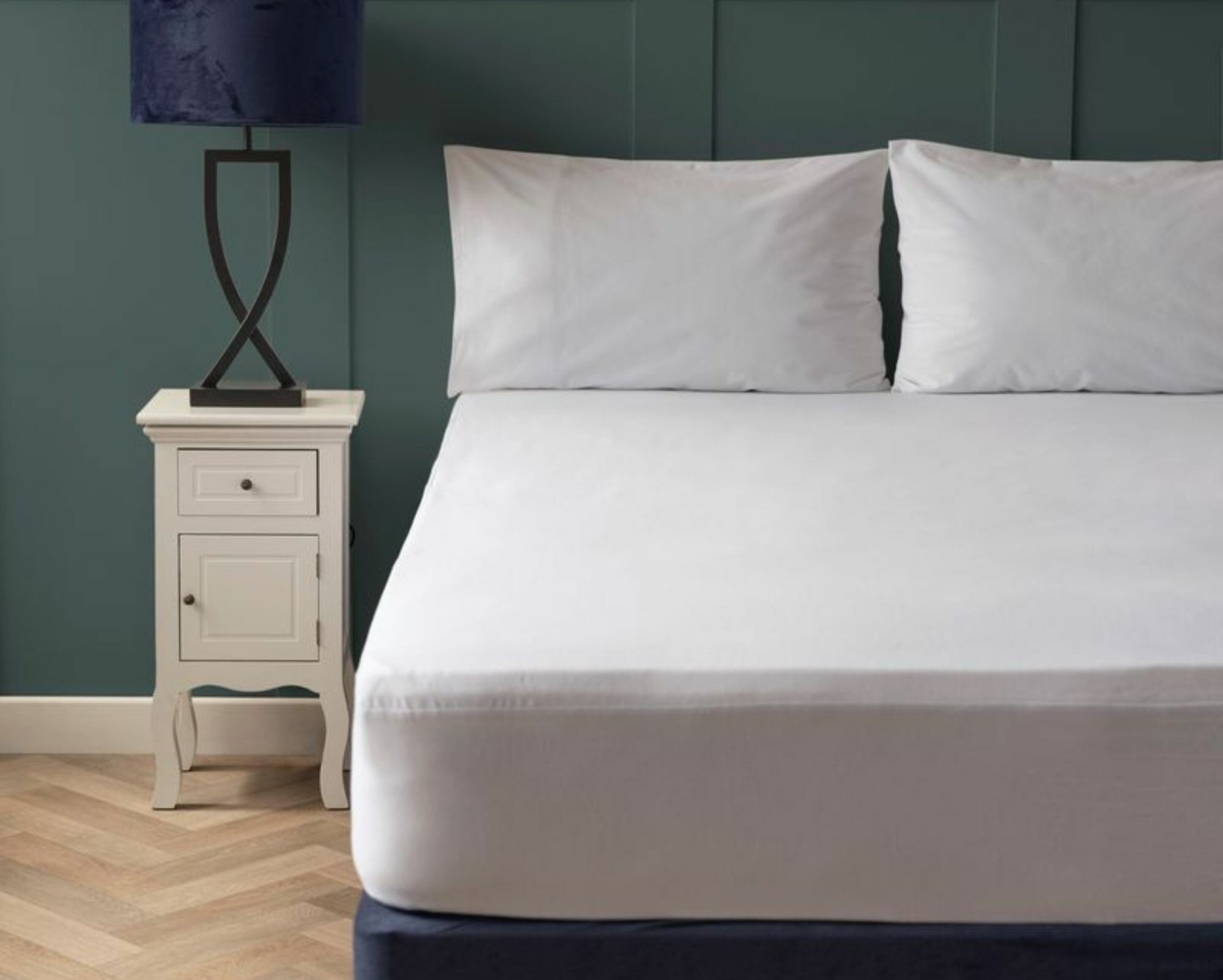
Step-By-Step Guide: How To Iron Sheets
Follow these steps to ensure your sheets are smooth and crease-free:
1. Washing and drying
The first step to smooth, wrinkle-free sheets is to wash them correctly by following the instructions on the label. After washing, pop them into the dryer on the correct heat cycle (or hang them on the washing line) and remove them when slightly damp. This helps remove creases from a flat or fitted sheet much more easily.
If your bed sheets are completely dry, you can moisten them with water from a spray bottle. Be sure not to soak the fabric - light misting is all you need.
2. Use a starch spray
Some people like to use a starch spray on damp sheets to ensure a crispier finish. However, this step is optional and may not be ideal for all bed linens as it can weaken the fabric over time, so do check the manufacturer's care instructions on the label.
Remember that a little goes a long way when using starch, so use it sparingly to prevent overly stiff sheets. After spraying, wait a few minutes before ironing, allowing the starch to penetrate the fibres for optimal results.
3. Get the iron ready
Now that your sheets have been correctly prepared, it's time to start ironing them. But what temperature is best for ironing sheets?
A hot iron is recommended to effortlessly remove wrinkles, kinks and stubborn creases. However, do choose the appropriate heat settings according to various fabric types:
-
When ironing organic cotton sheets, use a high-heat steam iron on the cotton setting.
-
We don't recommend ironing percale sheets, as heat can drastically shorten their lifespan. However, if wrinkles are a persistent problem, you can use a very low-temperature setting.
-
Use the lowest temperature for linen sheets and apply slight downward and outward pressure. Move the iron quickly over the fabric to prevent burning the material. Due to the low temperature, linen sheets often take a bit longer to iron.
-
Use low to medium heat settings for satin or silk sheets, as the fibres are moisture-sensitive. Iron bed sheets on the reverse side to preserve the glossy sheen. It's also a good idea to use a protective material between the iron and sheet to prevent any damage.
We recommend testing a small section of the sheet beforehand to avoid scorching or damaging the material.
4. Keep water on hand
As mentioned, damp sheets are the best for ironing. Most modern irons can be filled with water, which you can spray with the press of a button. If, however, your iron doesn't have this feature, keep a spray bottle of water nearby to quickly dampen your fitted or flat sheet to remove pesky creases.
5. The ironing process
A large well-padded ironing board and folding the sheet into a manageable size ensures an easier ironing experience.
To iron a fitted sheet, focus on the flat parts and avoid the elastic edges. Work on one section at a time, ironing smaller areas to prevent new creases from forming.
The trick to removing wrinkles from a top sheet is to fold it into quarters and iron all four layers at once. This also drastically cuts down on ironing time!
To keep your freshly ironed sheets wrinkle-free, make the bed straight away to prevent new creases or wrinkles from forming. Alternatively, follow our tips for properly folding and storing ironed sheets in your linen closet so they're ready to use when you need them.
How To Fold & Store Ironed Sheets
Folding and storing freshly ironed sheets keeps them crease-free and ready to use:
Fitted sheet
Fitted sheets are a bit tricky to fold due to the elastic edges, but here's an easy way:
-
Place the sheet on a clean, smooth surface with the elastic corners facing upwards and pointed towards the middle.
-
Fold the sheet in half by bringing the top corners to the bottom.
-
Fold the sheet width-wise to form a rectangle. Lightly press down to remove any trapped air and smooth the edges as you go along.
-
Fold the sheet length-wise, then width-wise, then length-wise again until you have a neat rectangle shape.
Top sheet
-
Spread the flat sheet on a smooth, clean surface.
-
Bring the top corners to the bottom, keeping the edges aligned.
-
Fold the sheet width-wise, then length-wise.
-
Repeat until you have a neat square or rectangle.
Storing flat and fitted sheets
Store sheets in a cool, dry place to maintain their fresh, crisp appearance. A popular storage hack is keeping ironed sheets inside the pillowcase of the set. This ensures they are neatly stored, prevents creasing and keeps linen closets organised.

FAQs
How can I remove wrinkles from top sheets without an iron?
If you don't have an iron, put the sheet into the dryer with a damp cloth. Another way to eliminate wrinkles is to place the sheet on the bed while it is still slightly damp, but make sure it has enough time to dry before getting into bed for the night.
How do I soften sheets before ironing?
Add half a cup of bicarbonate of soda to your wash cycle to soften stiff sheets before ironing.
Can I use a regular ironing board to iron sheets?
Yes, a regular ironing board is great for ironing sheets. However, you'll need to manoeuvre the sheet several times to ensure you have covered all the sides, especially for larger king-sized bed sheets.

